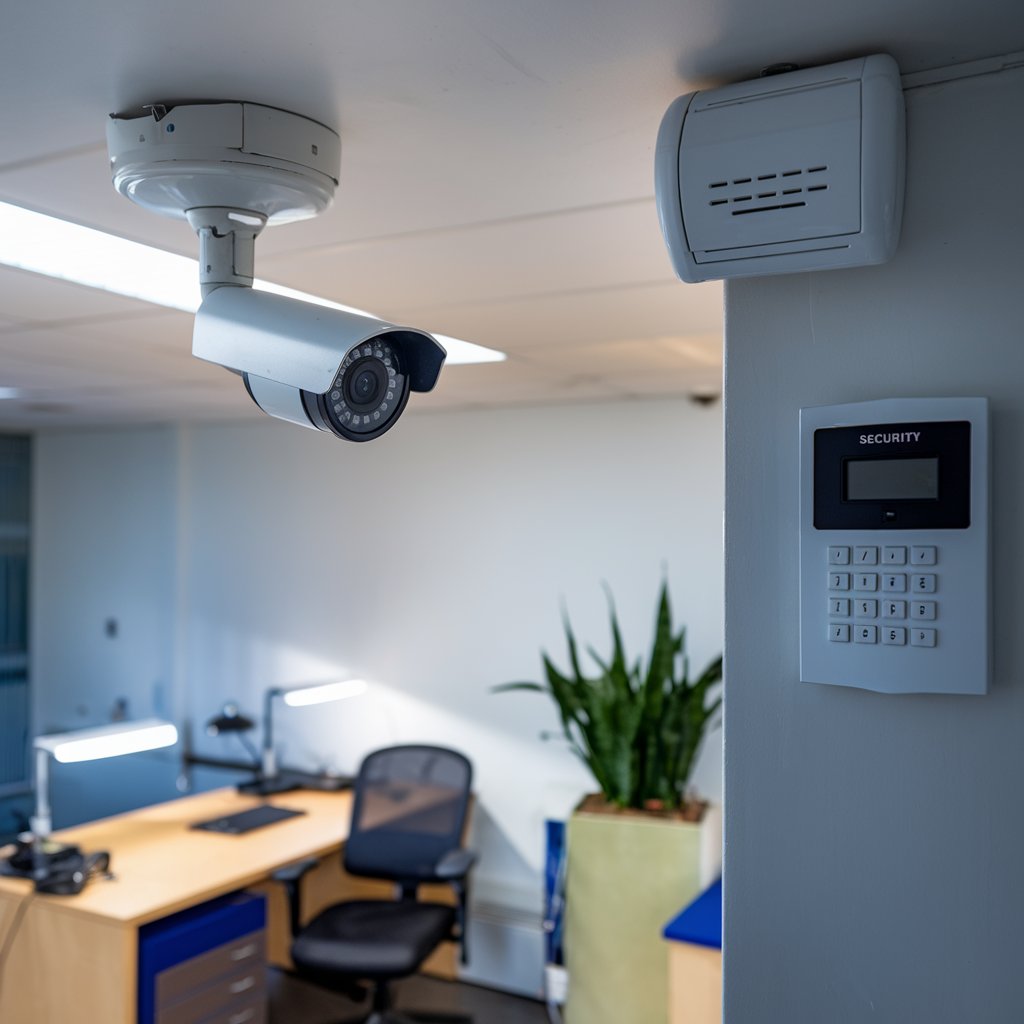The Commercial Security System Market is experiencing unprecedented growth, driven by the increasing demand for intelligent surveillance and integrated security solutions across commercial, industrial, and public infrastructure sectors. As businesses and institutions adapt to rising security threats and the need for real-time, data-driven decision-making, the market is seeing a shift from traditional security tools to advanced, AI-enhanced systems that offer seamless control, analytics, and scalability.
This surge is particularly influenced by the rising adoption of smart surveillance technologies, including fire protection, video surveillance, access control, biometrics, and cloud-based services such as VSaaS (Video Surveillance as a Service) and ACaaS (Access Control as a Service). These systems are increasingly integrated into building management platforms, enabling smarter, more proactive security environments.
Fire Protection Systems Gain Ground with Intelligent Detection and Automation
In the commercial security ecosystem, fire protection systems remain a foundational component. Recent developments in detection technologies and smart sprinkler systems have elevated their functionality beyond mere alarms. Modern solutions use AI and sensor fusion to identify the type and origin of fires with higher accuracy, allowing quicker response times and reduced false alarms.
These systems are now being integrated into broader building automation systems (BAS), ensuring coordinated evacuation processes, automatic alerts to emergency services, and real-time updates for facility managers. As commercial buildings become smarter, the integration of fire protection with other security layers becomes a strategic necessity.
Video Surveillance Shifts Toward AI-Driven, Cloud-Based Models
Video surveillance continues to dominate the commercial security landscape, but the technology has evolved rapidly from simple camera installations to AI-powered surveillance networks. Advanced video analytics, facial recognition, and behavioral detection now allow systems to identify suspicious activities in real time and reduce human intervention.
Components like smart IP cameras, storage solutions, and video management systems (VMS) have become central to modern surveillance setups. The growing preference for cloud-based storage and management through VSaaS enables remote access, scalability, and significant cost savings, particularly for small and medium enterprises.
The integration of surveillance with AI not only increases efficiency but also opens new possibilities such as predictive threat detection, automated incident reporting, and heat mapping in retail or facility usage analytics.
Download PDF Brochure @ https://www.marketsandmarkets.com/pdfdownloadNew.asp?id=234307144

Access Control and Biometrics Redefine Entry Management
Traditional keycard systems are increasingly giving way to smart access control technologies that include mobile access, multi-factor authentication, and cloud-based control. This is particularly evident with the rise of ACaaS (Access Control as a Service), which allows centralized management and improved scalability.
Biometric authentication systems—including fingerprint, facial, iris, and voice recognition—are seeing heightened demand due to their convenience and enhanced security. The global push for touchless access in a post-pandemic environment has further accelerated biometric adoption.
These systems are commonly deployed in sensitive commercial environments such as data centers, government offices, and financial institutions, where ensuring only authorized personnel gain access is paramount.
RFID and Smart Sensors Enable Real-Time Asset and Personnel Tracking
The use of Radio Frequency Identification (RFID) in commercial security is becoming widespread, especially in logistics, warehousing, and large-scale facilities. RFID enables the real-time tracking of goods, assets, and even personnel within a defined space, adding a critical layer of operational visibility and security.
Coupled with IoT and AI, RFID systems can generate actionable insights, such as unusual movement patterns or unauthorized access attempts, triggering alerts before a security breach occurs. This proactive approach significantly reduces risks associated with asset loss or internal threats.
Integrated Building Management Systems (BMS) for Holistic Security
As businesses strive for efficiency, sustainability, and safety, building management systems are increasingly incorporating security infrastructure as part of a unified platform. These systems integrate HVAC, lighting, fire safety, access control, and video surveillance, allowing for centralized control and real-time data monitoring.
This integration supports smarter buildings where systems communicate with each other—for instance, automatically locking down certain areas upon detecting an intruder or initiating fire response protocols without manual intervention. The synergy between building automation and security solutions represents the future of commercial infrastructure management.
Market Outlook: Opportunities and Challenges
The commercial security system market is poised for strong growth, with forecasts estimating a significant CAGR in the next five years. Key factors driving this expansion include:
-
The rising threat of cyber-physical attacks and insider breaches.
-
The need for regulatory compliance across industries.
-
The adoption of smart cities and digital infrastructure.
-
Growing demand for remote security management and automation.
However, the market also faces challenges, such as data privacy concerns, integration complexity, and high initial investment costs. Interoperability between legacy systems and modern digital platforms remains a pain point for many organizations.
Conclusion: A Future Built on Intelligent Protection
The surge in the commercial security system market is a clear indication that security is no longer a standalone function—it’s becoming a core component of operational strategy. From fire protection and video surveillance to biometrics, RFID, and cloud-based access control, businesses are embracing a holistic, data-driven approach to safeguarding people, assets, and infrastructure.
With ongoing advancements in AI, IoT, and cloud computing, the next wave of commercial security will be defined by real-time responsiveness, proactive threat management, and seamless integration into the broader fabric of smart commercial environments. The focus is shifting from just protection to intelligent prevention, setting a new standard for what security means in the digital age.
